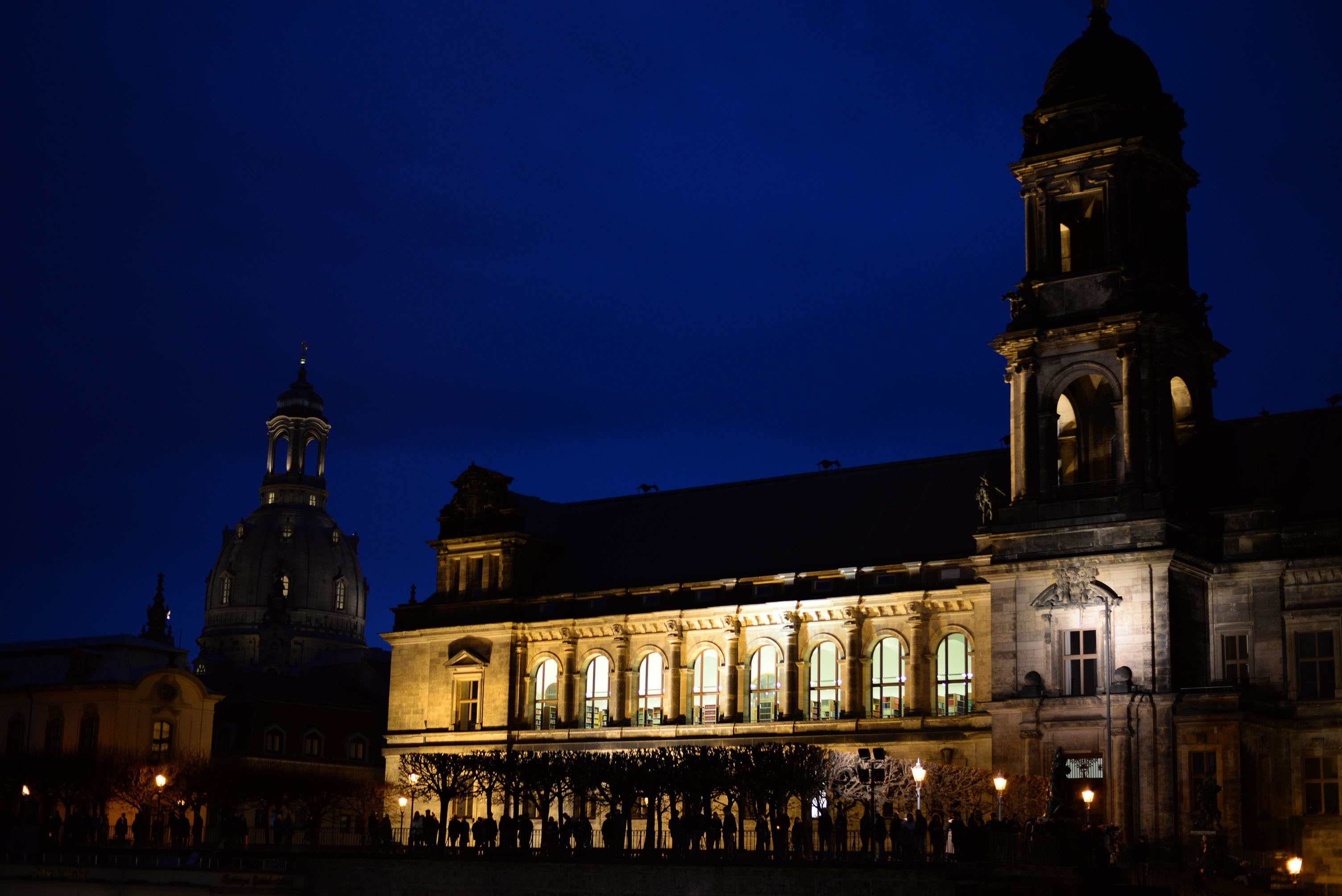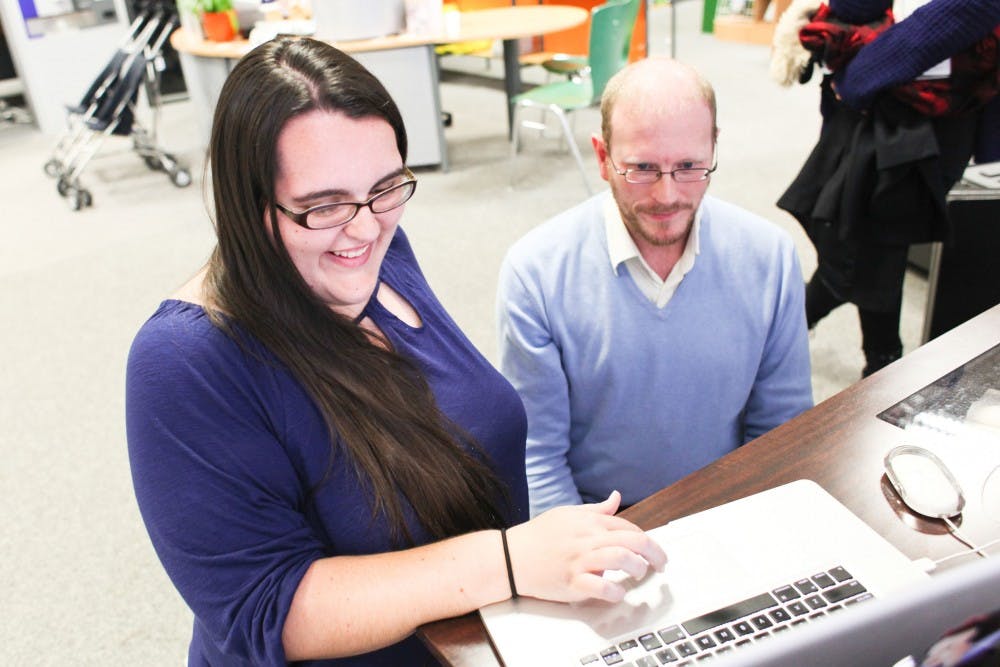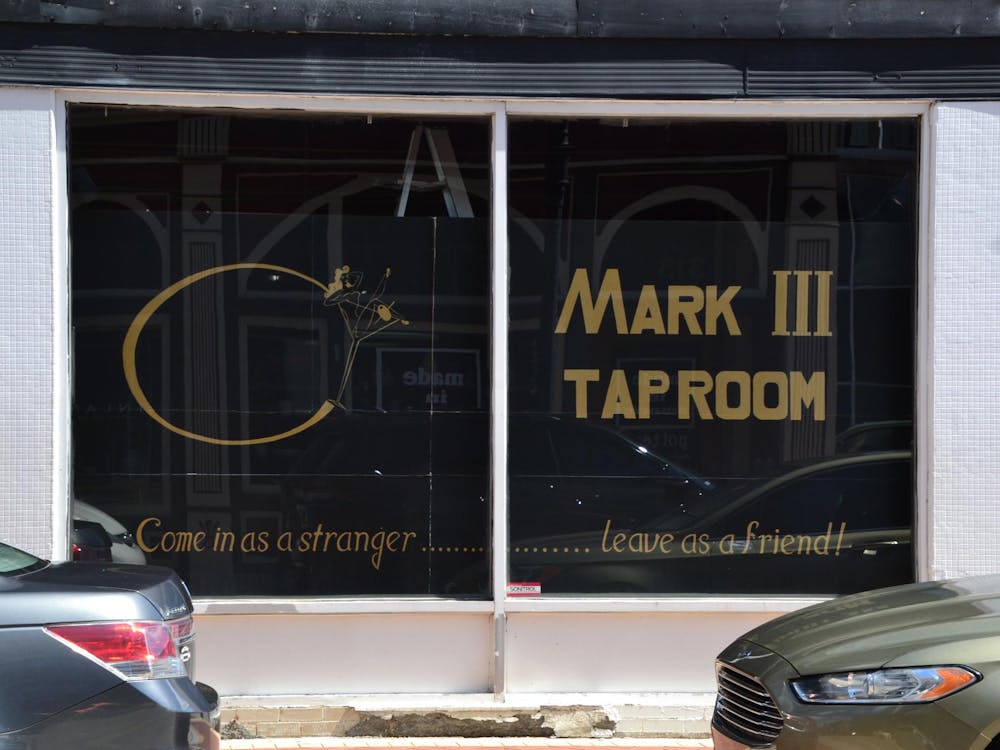“I myself have seen the bodies of schoolgirls who were boiled alive by my own countrymen, who were proud to be fighting pure evil at the time. ... And I have lit my way in a prison at night with candles from the fat of human beings, who were butchered by the brothers and fathers of those schoolgirls who were boiled.”
-Kurt Vonnegut, “Slaughterhouse-Five”
The bells tolled Feb. 13 while the men and women of Dresden, Germany, and beyond stood together with hands joined. The line coiled through the streets to commemorate the city’s destruction at the hands of the American and British forces, 69 years before.
Some wore white roses on their shirts as a sign of solidarity against war, racism and violence. Others sought to upstage the event and use the city’s center as a platform to condemn Allied war crimes.
Among them stood several Ball State students, a long way from home at the end of a journey for the Kurt Vonnegut Memorial Library immersive learning project.
English literature major Lacey Lord first heard about the Vonnegut project through a mass email from Ball State.
After a panel interview designed to check the group’s dynamic, Rai Peterson, an associate professor of English and project leader, brought Lord onboard.
“There were times during the project where I felt I knew Vonnegut better than I knew myself,” Lord said. “I was living and breathing Vonnegut for seven months.”
The purpose of the project was to sift through the life of the Indianapolis native, through the things he left behind and those who knew him. Peterson had more than just academic research to draw upon. She interviewed Vonnegut in 1996 at IUPUI and grew up with his work.
“I read Vonnegut’s books in college,” she said. “We couldn’t wait for the next one to come out.”
Senior English literature major Andrew Neylon got involved in the project after meeting Peterson during a summer course at Ball State.
“I was always interested in working with a literary legacy,” he said. “This idea of being able to work in direct relation to Vonnegut was really cool for me.”
Neylon worked as the head of the project’s film team, conducting interviews with people, such as Vonnegut’s former students and stand-up comedian Lewis Black, a fan of the writer’s work.

|
| Thousands of people hold hands around Dresden, Germany, as a symbol against war Feb. 13. |
Other members of the team sifted through the archives of the Lilly Library at Indiana University, making photocopies of early drafts of Vonnegut’s work. They also dug up his old newspaper clips from his time at Cornell University and his report card from Shortridge High School in Indianapolis.
Among these artifacts were different drafts of Vonnegut’s 1969 novel “Slaughterhouse-Five.” Throughout the story, Vonnegut tells the tale of a semi-autobiographical internment as a prisoner of war during World War II and how he survived the Allied firebombing of Dresden in the basement of a meat locker.
Frederick Taylor of the German newspaper Der Spiegel cited a study suggesting the death toll to be around 18,000 to 25,000 people, with earlier estimates in the range of 30,000 to 100,000. The exact figure is unclear and usually debated.
The students compiled these materials into a mobile version of the Kurt Vonnegut Memorial Library. Eventually, the Dresden Municipal Library invited the team to come to Germany and teach about Vonnegut’s life and writing.
The group met members of the German branch of Vonnegut’s family and said they were surprised at how renowned their distant cousin was in the United States.
During the trip, the group ran workshops for high school and university educators on how to teach Vonnegut’s surrealist work. While Germans may not be as familiar with Vonnegut’s writing, Neylon expressed the accessibility of it.
“I know lots of people who only have a high school education who love him and lots of people who have [doctorates] who love him,” Neylon said. “He’s cool for that reason.”
When not teaching others, the group learned more about Vonnegut by visiting sites in Germany from the war.
In Berlin, Neylon visited a European monument for murdered Jews during the Holocaust. Across the street from the memorial, he found another Holocaust monument to murdered gay people.
For him, the experience enriched his studies in a Ball State course about the Holocaust.
“I was able to leave my class for a week, but to actually go to Germany,” Neylon said. “I think that really offered some interesting insight into what I was learning in my class.”
The group was in Dresden for the anniversary of the bombing. To mark the occasion, the city lined up, held hands and had a 15-minute moment of silence while church bells rang.
The group split up to try and hold hands with the locals, if they were willing. Peterson found herself, hands interlocked, between a husband and a wife.
“A lot of people in line are openly weeping because you’re standing in this incredibly beautiful city, thinking about how it was basically bombed off the map,” Peterson said.
After the event, she thanked the family for including her in the vigil.
“The man said to me, ‘All countries are guilty of crimes during war — Germany has no room to talk,’” Peterson said. “And that really was the attitude we met there: a lot of real, sincere regret of Germany’s past.”





